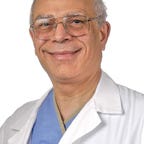Growth Plates: Physis,Epiphysis, & Apophysis
What is the difference between the physis, epiphysis, and the apophysis?
The physis (growth plate or epiphyseal plate) is a hyaline cartilage plate in the metaphysis at the ends of each of the long bones. The physis is found in children and adolescents that allow the bone to grow in length and it is weaker than the ligaments. 15% of all fractures in children involve the growth plate. The majority of growth plate injuries occur in the hypertrophic zone (provisional calcification). The hypertrophic cell zone (maturation zone) is a growth layer in which chondrocytes become enlarged, swollen, and eventually die (degeneration). Calcium is eventually released and deposited (provisional calcification).
The epiphysis is a rounded end of long bone that has direct articulation with bone at the joint. Away from the joint, there is another layer of cartilage called the growth plate or physis. When a fracture goes through the epiphysis, it is a called a Salter-Harris Type III fracture. If the fracture goes through the epiphysis and the metaphysis, it is a Salter-Harris Type IV fracture. Both Salter-Harris type III and IV fractures are intra-articular fractures that require surgery if displaced. The epiphysis is covered with articular cartilage at the joint. Famous epiphyseal lesions include: chondroblastoma, clear cell chondrasarcoma, giant cell tumor, intraosseous ganglion, and epiphyseal osteomyelitis.
An apophysis is a growing center which grows (physis) upon (apo) the mother bone. There is no direct articulation with the bone at the joint. An apophysis is a normal developmental outgrowth of a bone, which arises from a separate ossification center, and fuses to the mother bone later in development. It has a limited growth potential. An apophysis is found where major tendons and ligaments attach to bone. The tibial tubercle apophysis, for example is an insertion for the patellar tendon. An apophysis can also be the site of muscle attachment to the margin of the ilium. Occassionally, the apophysis can persist and if injured, it can become symptomatic. It is variable in shape and can be mistaken for a fracture. Iliac apophysis is an important sign that helps in the management of scoliosis. The stages of the iliac crest ossification is called “Risser Sign”. The Risser sign is a measure of maturity. It predicts if the curve of scoliosis will get worse. Scoliosis is the lateral curvature of the spine. The growth of the spine correlates with the ossification of the iliac apophysis across the iliac crest. It is difficult to see vertebral growth of the spine, so we rely on observation of the development of the iliac apophysis to determine vertebral growth completion to help in management of scoliosis. Slip vertebral apophysis is a condition that occurs in children. Children will complain of back pain, usually occurring in the lower lumbar spine. The condition acts like an acute herniated disk. In children, rule out limbus vertebral fracture and this condition usually requires surgery. Severe’s disease (calcaneal apophysitis) is an inflammation of the growth plate in the calcaneus in children. This condition usually occurs due to overuse. It usually resolves by itself when growth is completed or activity is decreased. An Osgood Schlatters lesion is a painful lump or swelling on an upper part of the tibia, below the knee cap in children and adolescents.
This condition is caused by apophysitis in the tibia tubercle, as well as fragmentation of the tubercle with soft tissue swelling and a painful lump. Overuse syndrome combined with bone growth. The condition coincides with periods of growth spurts occurring more in boys. This can be confused with a fracture, and the condition is self-limited. Little Leaguer’s Elbow is a condition caused by a pitching motion, which places stress on the elbow joint, resulting in avulsion and inflammation of the medial epicondylar apophysis. There will be pain and tenderness located on the medial side of the elbow. Treatment of little leaguer’s elbow consists of rest and cessation of throwing.
